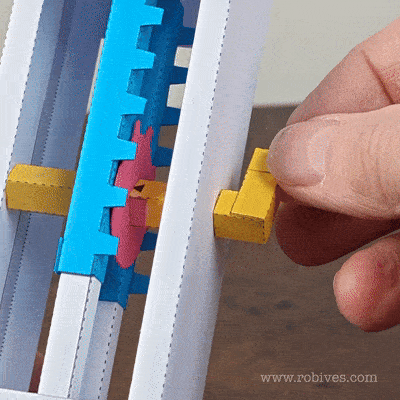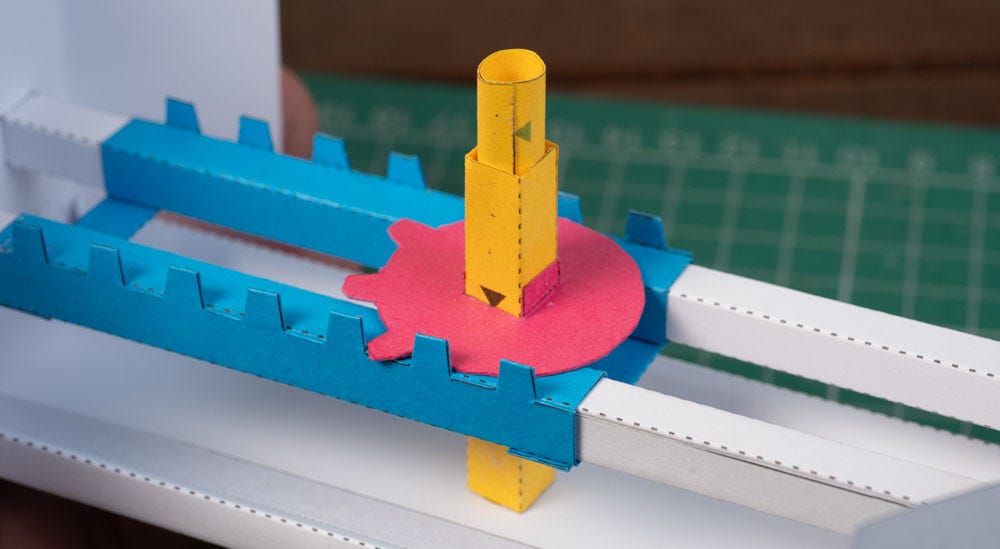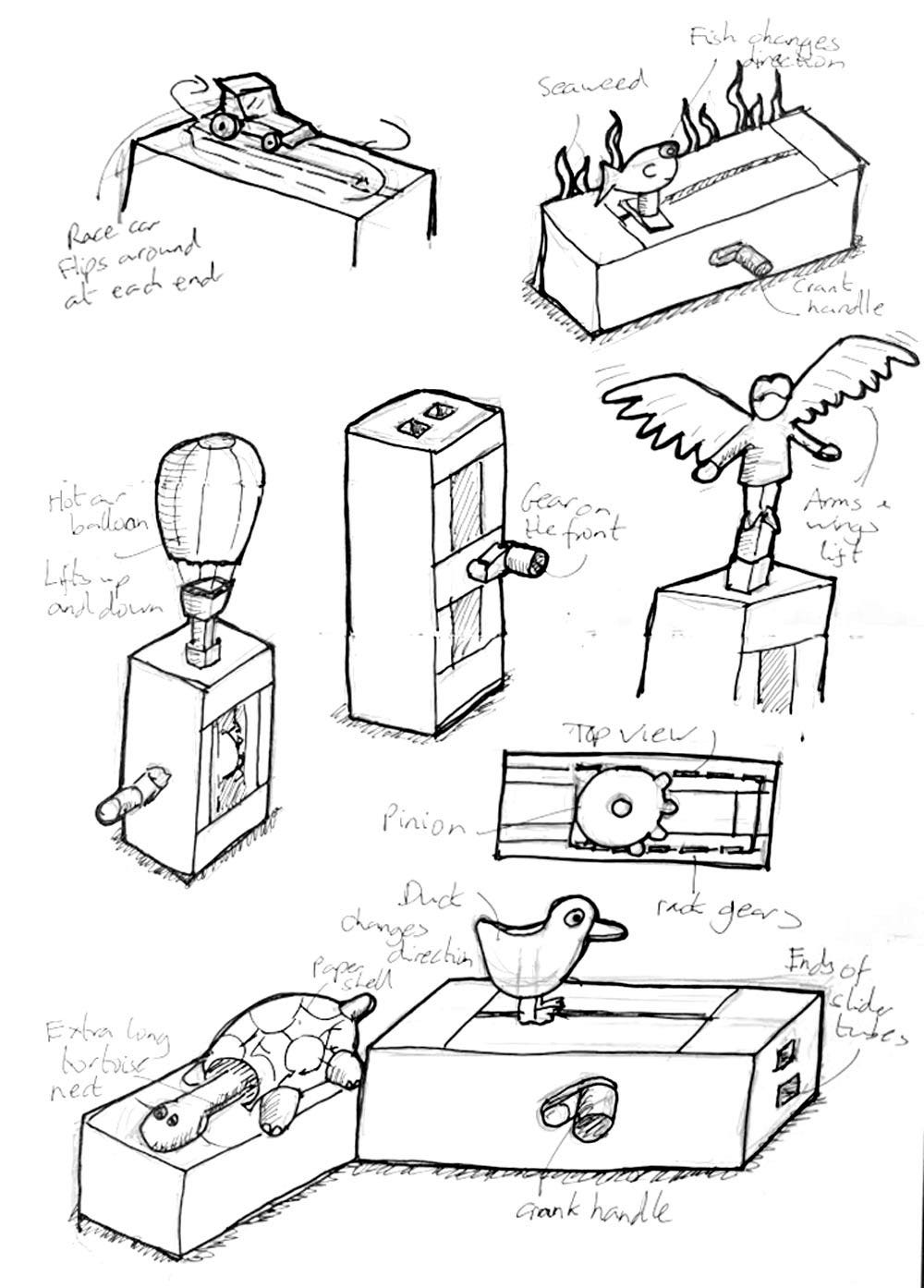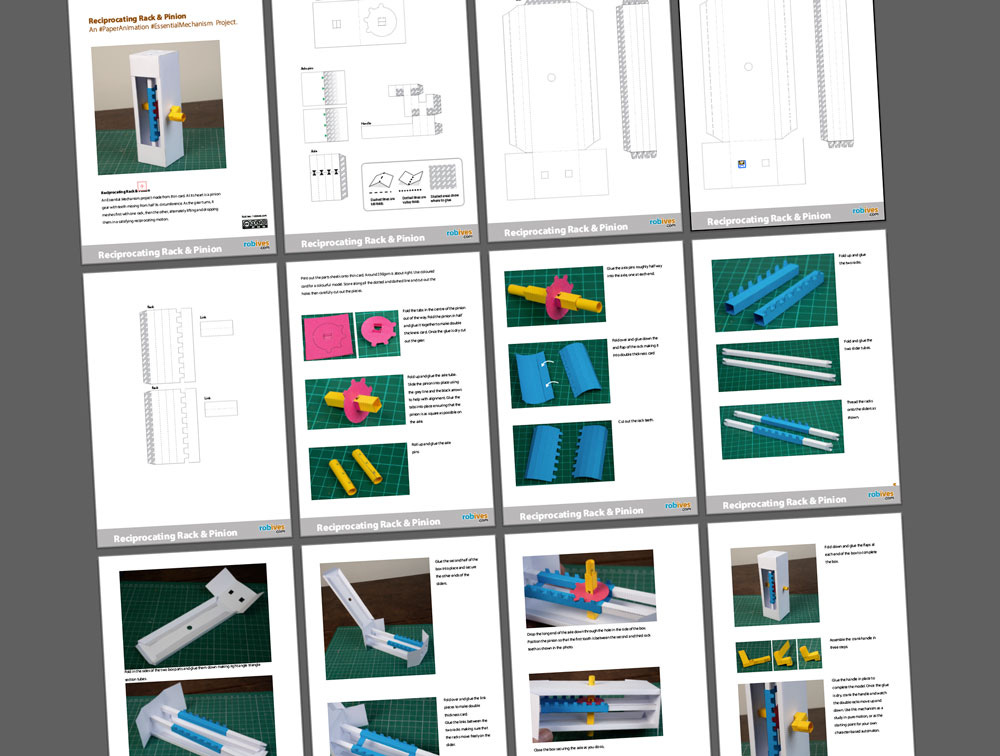Reciprocating Rack Mechanism
An #EssentialMechanism project
I often find myself flicking through my copy of 507 Mechanical Movements, Henry T. Brown’s 1868 compendium of ingenious mechanisms. Its pages are full of curious ideas, many rooted in the steam age, yet many still wonderfully adaptable to paper projects today. And so it was that I found myself drawn to mechanism 114: the reciprocating rack and pinion.
In this mechanism, a pinion gear with half its teeth removed rotates continuously. During the first half of its cycle, it engages with the upper rack, driving the rack to the right. In the second half, it meshes with the lower rack, returning the entire yoke back to the left. Reciprocating simply means that the yoke moves back and forth.
Rather than recreating the chunky, solid gear teeth of the original mechanism, I opted for my usual mesh‑gear design to form the card version of the rack. Both the pinion gear and the rack are cut from double‑thickness card, meshing neatly at ninety degrees. The finished mechanism is then housed inside a simple box, with slider tubes guiding the racks as they move side to side.
The end result is a playful mechanism that now joins my Essential Mechanisms collection. I hope you’ll enjoy building it, either as a pure example in the spirit of 507 Mechanical Movements, or as a springboard for your own character‑based automata projects.
The project comes as a pair of downloadable PDF files, ready for you to print and make. The first, the full file, includes all the parts along with step‑by‑step instructions. Because this file is compressed for easy downloading, it’s tricky to edit the parts, for example, if you’d like to adjust sizes or add colour. The second file, parts, contains just the components. It’s uncompressed and ready for you to adapt, edit, and customise to your heart’s content.
If you’re a premium supporter of this newsletter, you’ll find both files ready to download at the foot of this page. Not yet a subscriber? No problem, you can purchase the files for £5 (or local equivalent) directly from the website.
Thank you for following along with this little journey into gears and racks. I’m always delighted to share these mechanisms, not just as curiosities but as sparks for your own making. Whether you build this one straight from the files or adapt it into something entirely new, I’d love to hear how it turns out. Your support and enthusiasm keep these projects alive, and I’m grateful to have you as part of this tinkering community.






